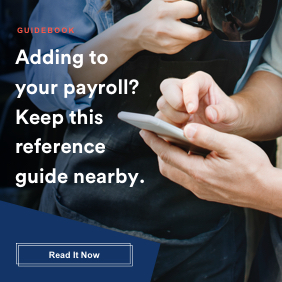To attract and retain talent, it’s crucial to create a structured and competitive compensation plan, or update an existing one.

Crafting or updating a compensation plan can be daunting for small to midsized business, but whether you have one or not, it’s important to align with prevailing conditions. To attract and retain talent in a tight applicant market, it’s crucial to create a structured compensation strategy or update your current plan to meet demand.
What is a compensation strategy?
We’ll start with a compensation strategy: what are your goals when determining wages and benefits for staff? Are you looking to maintain your current headcount? Increase benefits offerings? Hoping to attract a wider or more experienced talent pool? Determining your reasons for defining strategy should guide your efforts. From there you can begin to allocate how funds will be distributed.
What are the different types of compensation?
A comprehensive comp plan takes every employee remuneration into consideration. These include wages, raises and incentives, wellness, tuition reimbursement, training allowances, retirement funding, stock options, meal plans, and more. Wages alone are not the full picture; all of these contribute to the overall compensation to the employee.
The type of benefits offered is a key component of compensation strategy. As a general guide, benefits, apart from wages, typically comprise about 30% of overall compensation. As an example, an employee whose base wages are $30,000.00 would typically cost the employer around $9,000.00 in total compensation.
There will also be employer payroll taxes, you’ll be responsible for paying. This should be worked into your comp planning as well.
Aligning your compensation plan with market conditions
If you experience high turnover and exit interviews net a consistent theme — leaving for higher wages — you already know you need to adjust to the market. Even without attrition, it’s advisable to verify you’re in line with the market periodically. Turnover is expensive, so you want to make sure the talent you have on hand is satisfied, and not considering a move.
Accessing wage data
There are many resources for business to determine market conditions. The US Department of Labor publishes wage data by occupation annually. They list virtually every category of jobs in the country. If employees work under a collective bargaining agreement (CBA), your union local can advise on prevailing wages. But geography and local conditions can play a large role in compensation and benefits variances.
With increased pressure on business to avoid discussions about salary history, whether there is legislation in your area prohibiting it or not, many businesses are publishing salary ranges in job postings and on their websites. LinkedIn now lists salary ranges and Google for Jobs includes salaries and locations. Many employers are publishing ranges to attract talent as well. To find out what your role should be paying, a quick search of comparable openings in your area could give you the information you need.
Compensation in the age of pay history bans
Even if you’re not in a jurisdiction that prohibits discussing salary history, there’s a good chance you will be soon. To date, 9 states and 32 local jurisdictions have banned salary requests, and legislation is pending around the country.
These can create a problem for employers. Salary bans aim to create pay equity: if two new hires perform the same work, they should receive the same pay. But if one new hire has more qualifications – experience, skills, etc., should they be compensated at a higher level even though they do the same job?
If previous qualifications factor into performance, they may. An example may be an inexperienced retail associate compared to one with several years of customer care experience. It might be advisable to create position levels. Level 1 sales associate, for example, comes with 1 year or less experience; Level 2, 1 to 3 years; Level 3, 3 years or more. Remember to upgrade staff as they meet milestones; when your Level 1 has one year with your company, they should move to Level 2 wages.
Forecasting compensation costs
As you craft your compensation plan, remember to include future wages and benefit costs. Factor in annual wage increases, incentives, or bonuses planned at the top of the range. If the employee meets goals, you’ll be ready to reward them accordingly.
In a good market, a structured compensation plan is necessary to attract and retain the best talent you can afford: in a tight market, a comprehensive plan may be mission-critical.
Have payroll questions? We have payroll advisors! Request a demo today to learn more.







